How to grow garden balsam from seeds?
Every florist wants the flower bed in front of his house to be the most beautiful. Growing garden balsam from seeds and then planting it in the soil will help to make the flower bed elegant and unique.
General information
Garden balsam is a tropical African plant that is now widely spread throughout the world. In different countries, the cultivation of a flower occurs everywhere, because it blooms for a very long time and does not require scrupulous care.
When boxes with many seeds appear in place of bright buds, you need to take care of the sensitive plant. The slightest touch to it leads to the opening of the capsule and the spread of seeds throughout the garden.
Garden balsam has more than one hundred species. Among them there are not only annuals, but also perennial plants.
Growing this small shrub is possible in different conditions:
- in the open field;
- in pots on the terrace;
- on the balcony and on the windowsill.
The flower adapts well and grows quickly. Shoots reach 0.5 m, and long cuttings with green oval leaves extend from them. Balsam produces many buds that are velvety to the touch, which are most often yellow, red or white. Due to the fact that small particles of moisture accumulate on the flowers, the plant is popularly called Vanka wet.
Reproduction of balsam
Growing strong seedlings from seeds at home is within the power of the most inexperienced novice growers. The best time to sow is the last month of winter, but you can do it a little later, in March.
Prepare small seedling pots about 7 cm in diameter in advance. Buy soil for flowering plants or make a planting mix at home.
- Mix peat and sand in equal proportions, pour into pots and moisten.
- Make a light pink manganese solution and soak the seeds in it for 15 minutes.
- After draining the rose water, deepen the seeds 2 mm into the ground and cover the pot with a glass jar.
Advice
In order for shoots to germinate from seeds, you need to maintain the temperature in the room at about 20 ° C and systematically water the soil. Remember to lift the jar periodically to air out.
The sprouts begin to hatch 2-3 weeks after planting. When 3 leaves are formed on them, each seedling is transferred to a separate pot and continues to be watered regularly. In a grown plant, pinch the top to make an adult bush fluffy.
After the night frosts stop, the seedlings grown from the seeds are taken out of the pots along with the soil and the tips of the roots are pinched. In the open ground, small holes are dug, compost is placed there, seedlings are placed, watered and covered with earth tightly.
Growing a flower from seeds at home can be done in another way. You will need natural white fabric. Wrap prepared seeds in it, place on a wide flat tray, moisten with water and moisten constantly until you notice small sprouts inside the cloth. They appear in 4-5 days and can be planted immediately.
Many summer residents successfully grow garden balsam, practicing sowing seeds directly into the soil. This should be done in mid-April. On a personal plot, they break up a garden bed, water it and lay out the seeds at a distance of 25 cm from each other. Cover the top of the flower bed with polyethylene. If the temperature outside rises to 24-26 ° C, the film is removed. Seed shoots appear in 3 weeks.
Sometimes growing a plant at home is done by cuttings.
- Shoots of 7 cm in size are cut off from a shrub that has overwintered on the windowsill.
- The lower leaves are torn off and planted in fertile soil.
- Water, thoroughly compact the ground and cover with a plastic transparent glass to create a greenhouse effect.
After a week, the shoot will have roots, and it will fully take root in the soil.
Balsam care
For garden balsam to develop well, the earth must be soft and have low acidity. The ideal option is a soil consisting of the same parts of humus, turf, compost and perlite. Before planting seedlings or seeds, it is advisable to treat it with a fungicide.
Growing a flower will be successful if the garden bed is positioned correctly. Garden balsam loves warmth and light, but does not tolerate the scorching rays of the sun. From them, it begins to dry out and wither. Therefore, seedlings can be planted along the fence or next to small trees. Scattered light will be enough for flowering and growth.
Balsam needs moistened soil, but it should not be overfilled with water to avoid falling flowers and rotting roots. In hot weather, watering should be done early in the morning or in the evenings 2 times a week. If the soil begins to dry out earlier, then the number of waterings should be increased. Spray the leaves with water periodically. This has a beneficial effect on the plant, and the flower will delight you with a huge number of buds.
Growing balsam involves weeding the garden regularly. The loose earth is enriched with oxygen, which greatly increases the flowering time of the shrub.
Top dressing and fertilizers
3 weeks after planting the seedlings in the garden, you need to begin to apply top dressing to the soil. This is done throughout the growing season.
Advice
Fertilizer should be saturated with phosphorus and potassium. Avoid nitrogenous formulations. From them, shoots and leaves grow quickly in the flower, but the number of buds is much reduced.
The successful cultivation of balsam at home is guaranteed by Fertika Lux fertilization. Its fine mineral crystals are perfect for feeding flowering plants in pots and outdoors.
The substance increases the number of flowers on the shrub, makes them brighter and makes them bloom longer. Fertika Lux is available in sachets of 20 and 100 g. According to the instructions, it is necessary to dilute 20 g of the preparation in 10 liters of water and water each shrub early in the morning. For feeding balsam, it is recommended to reduce the dose by half and use 10 g of the product. This is necessary in order not to burn delicate plants.
You can also use the liquid fertilizer "Merry Flower Girl", intended for begonias and violets. It contains important trace elements:
- magnesium and calcium;
- boron and iron;
- manganese and molybdenum;
- copper, zinc and cobalt.
They provide good nutrition for the balsam. For root feeding, you need to dilute 2 caps of the product in 10 liters of water and water the plants with it.
Diseases and pests
Most flower diseases come from abundant watering. Waterlogged soil leads to the formation of gray mold and other fungal infections. From them, the flower quickly fades and loses its leaves. If you notice these signs, stop flooding the plant. Wait until the soil is completely dry, fluff the soil well and sprinkle it with a little water.
Sometimes balsam garden is affected by a spider mite. A small insect lives on the inside of the leaves and contributes to the appearance of dry light spots on them.
- To get rid of the pest, remove all affected leaves.
- Dissolve a large spoonful of soap shavings in 1 liter of water, soak a cloth in it and wipe the green shoots.
If the spider mite has strongly affected the flowers, treat the flower bed with special preparations. For example, "Akarin", "Lightning" or "Fitoverm".
In the open field, the plant often attacks the whitefly.Its larvae accumulate on leaves and secrete a sticky liquid. A pest at home can be destroyed with Karbofos or Iskra.
Claw mites are microscopic insects. Settling on balsam, they lead to the fact that the leaves on it stop growing, curl up into a tube and harden. A sick flower is treated with "Akarin" or "Lightning".
If the balsam becomes infected with thrips, the leaves become bent and stains appear on them. It is urgent to remove the deformed leaves and spray the plant with "Aktara" or "Fufanon".
Advice
Pest drugs should be used according to the instructions and treated 2-3 times with an interval of 5 days.
What to do in the fall?
With proper care, balsam blooms wildly throughout the summer and early fall. When it gets colder outside, box-shaped fruits full of seeds appear in place of the buds. They need to be collected, dried and folded into a cloth bag. They will be needed in the spring to grow new seedlings at home.
The balsam growing in the garden is an annual plant, so in October it must be removed from the flower bed and the soil must be thoroughly loosened.
As you can see, with proper care, growing garden balsam from seeds is easy. That is why the plant is widely used in landscape design. It makes a wonderful decor for flower beds and borders.
Balsam can be combined with other colors. The garden bed looks stylish and unusual, where Vanka is planted wet with violets or begonias.
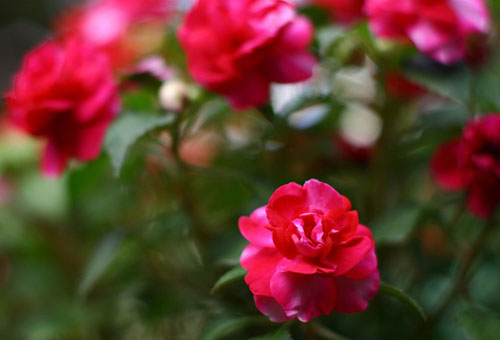
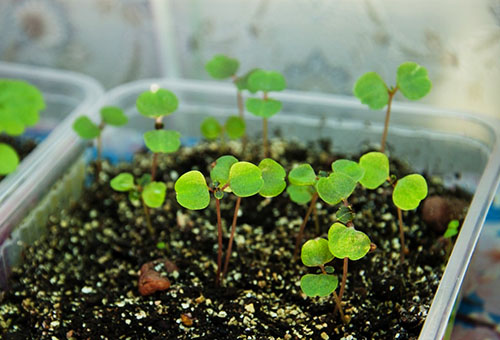
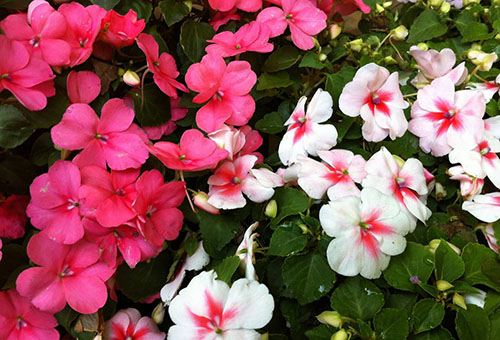
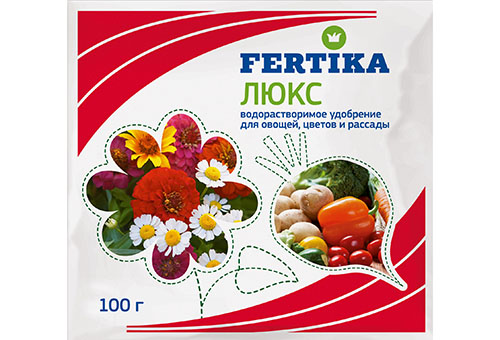
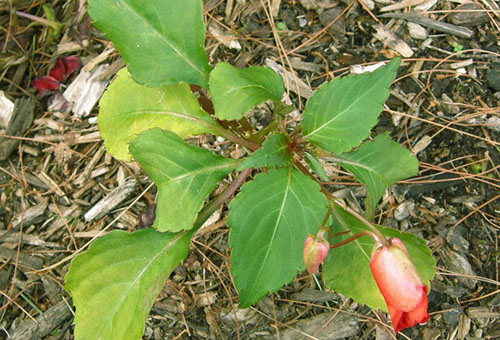
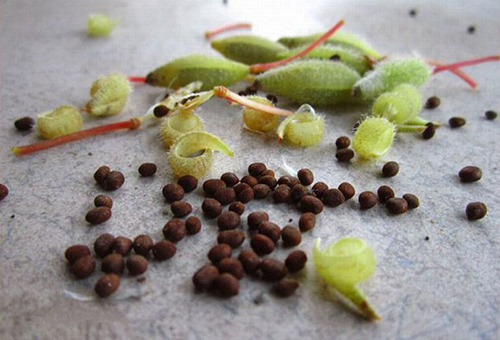
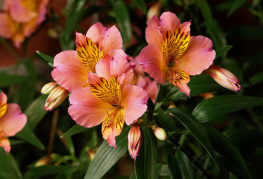
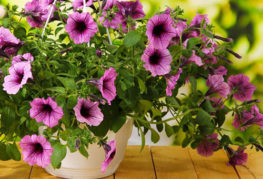
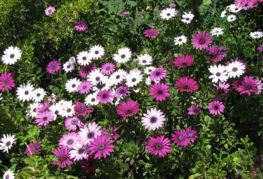
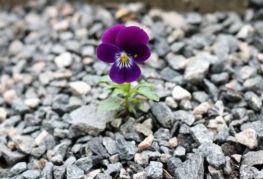
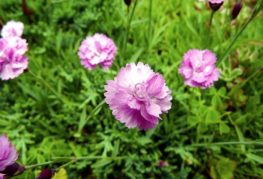
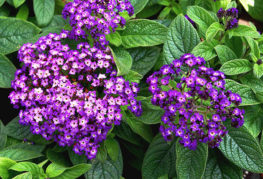
and will be published shortly.